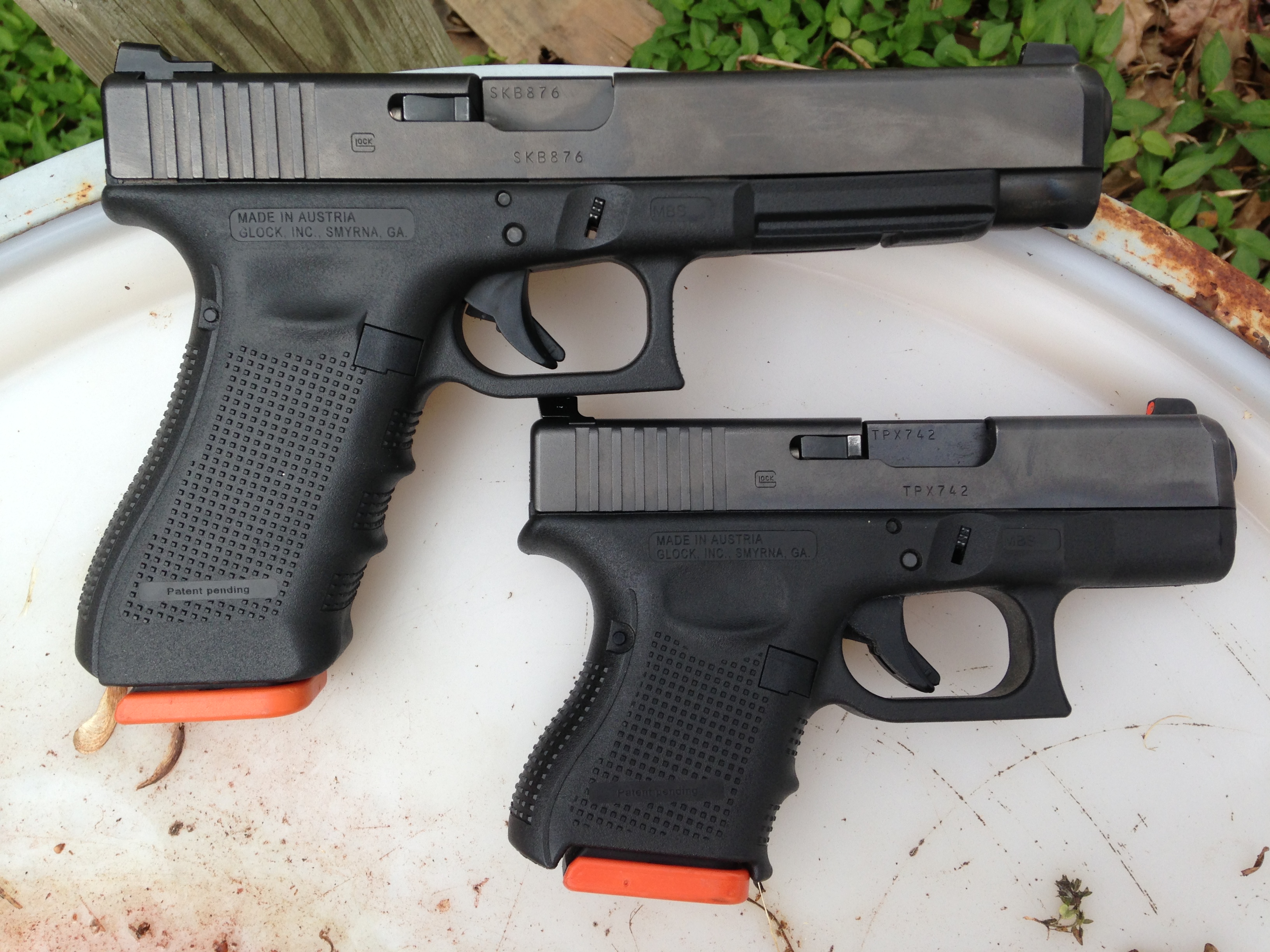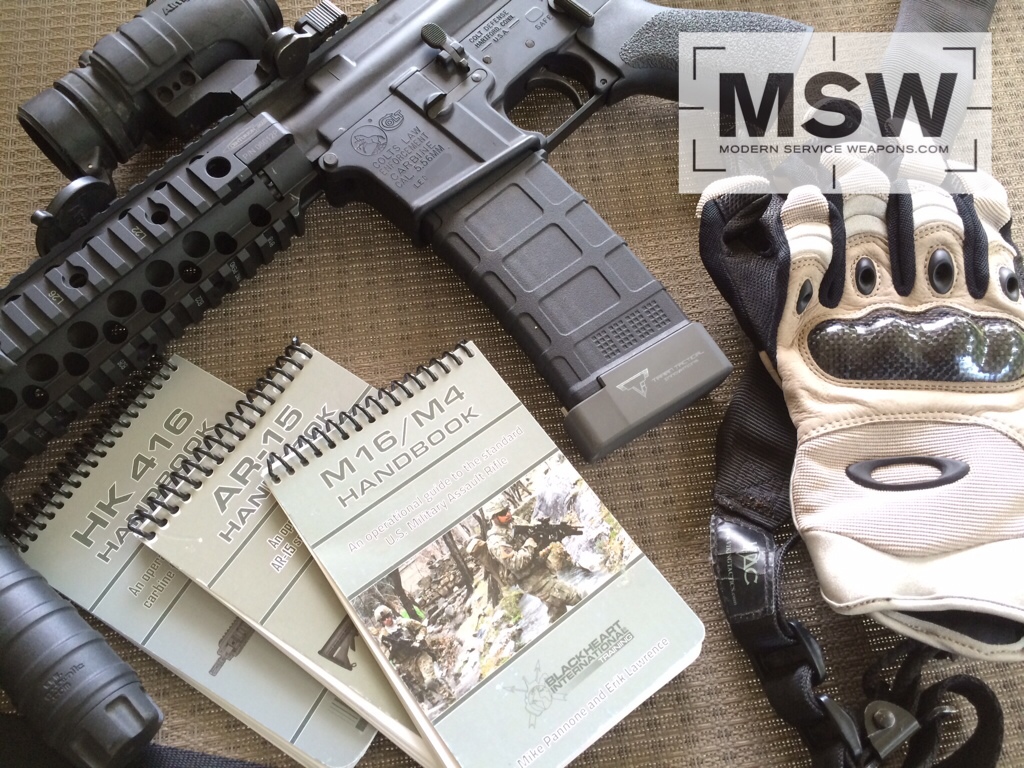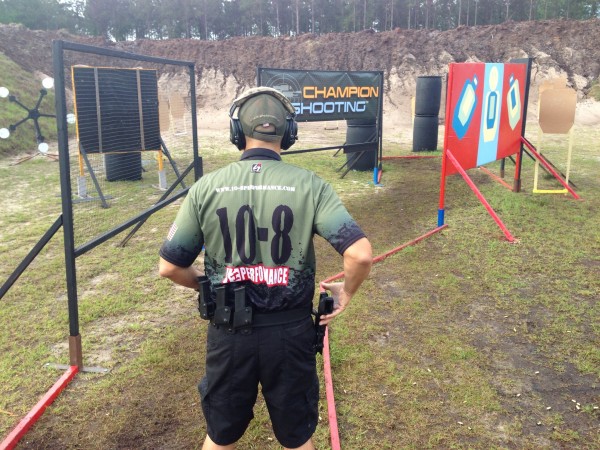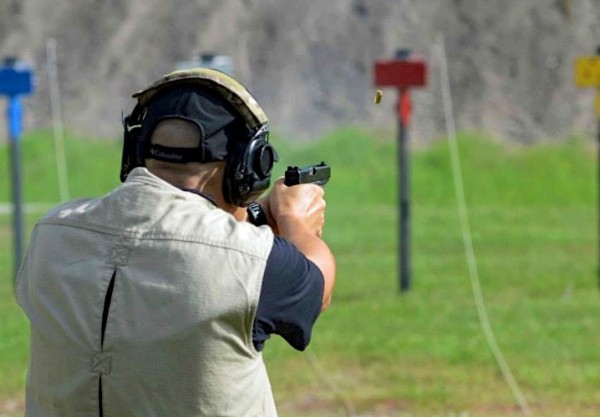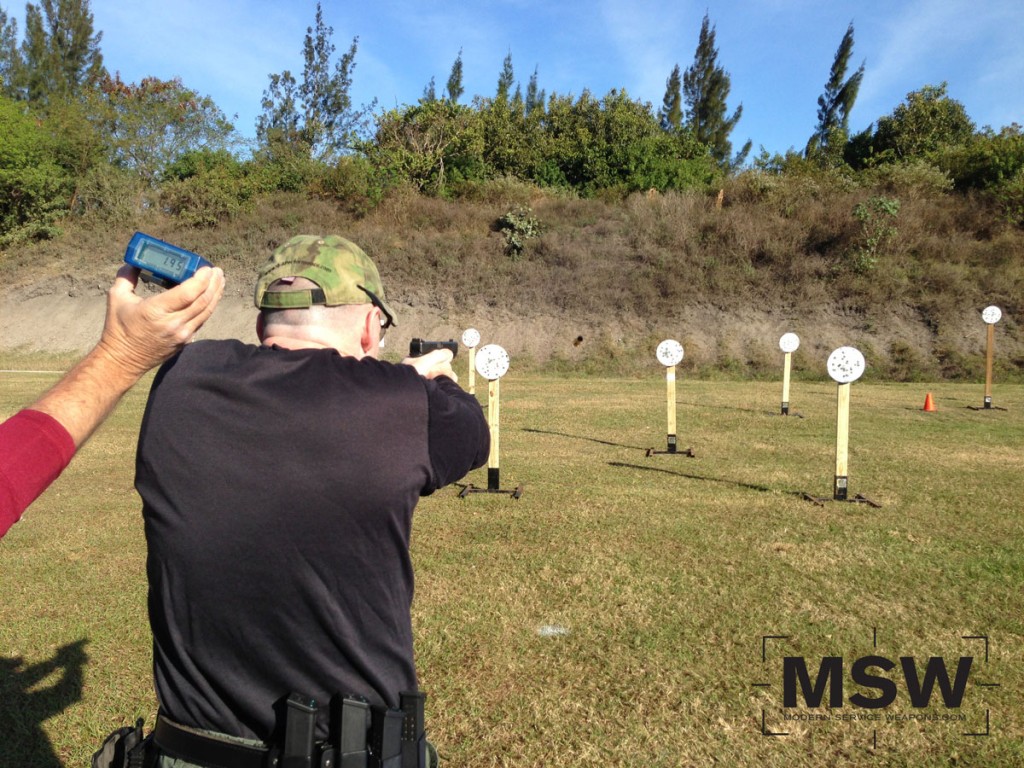Recently, I’ve been shooting some drills from concealment with various pistols from the Glock 9mm family. My thinking over the years on a defensive pistol is that it should be one that fits a couple of simple criteria: a pistol that is reliable, and one that you’ll carry every day. For some, a Ruger LCP fits the bill. A Ruger in the pocket always beats a custom M1911 in the car when it comes down to needing it now. However, I’ve always advocated carrying the most gun that you can comfortably carry. Some will say there is an “average” gun fight (IE 1-3 feet, 1-3 Seconds, 1-3 rounds fired). I feel that there is no such thing as “average” and if I can perform these tasks at 25 yards at speed, the close in stuff is a chip shot. However, merely banging away at contact distance doesn’t equate to hitting stuff at distance if it becomes a lifesaving requirement. But, that is a conversation for another day. Continue reading
Category Archives: Training
First Look: ID Target Systems
We have come a long way since the B-27 target, a staple used in law enforcement qualifications since what seems like the beginning of time. Fortunately, we have evolved past that target that features unrealistic targeting zones that reinforce bad habits in shot placement. Before I go any further, I feel the need to mention that I use different targets for different goals. For building specific technical skills, I will use simple targets such as a bullseye, round or square plates, etc., These targets aren’t designed to simulate a tactical application, but rather, evaluate whether or not I meet a particular accuracy standard. For “tactical” type training, I prefer targets that feature scoring zones located in realistic areas such as the ocular cavity or high thoracic chest. No more shooting at the navel to get 10 points. Here, we will be discussing targets for tactical type training. Continue reading
Equipment vs. Skilll
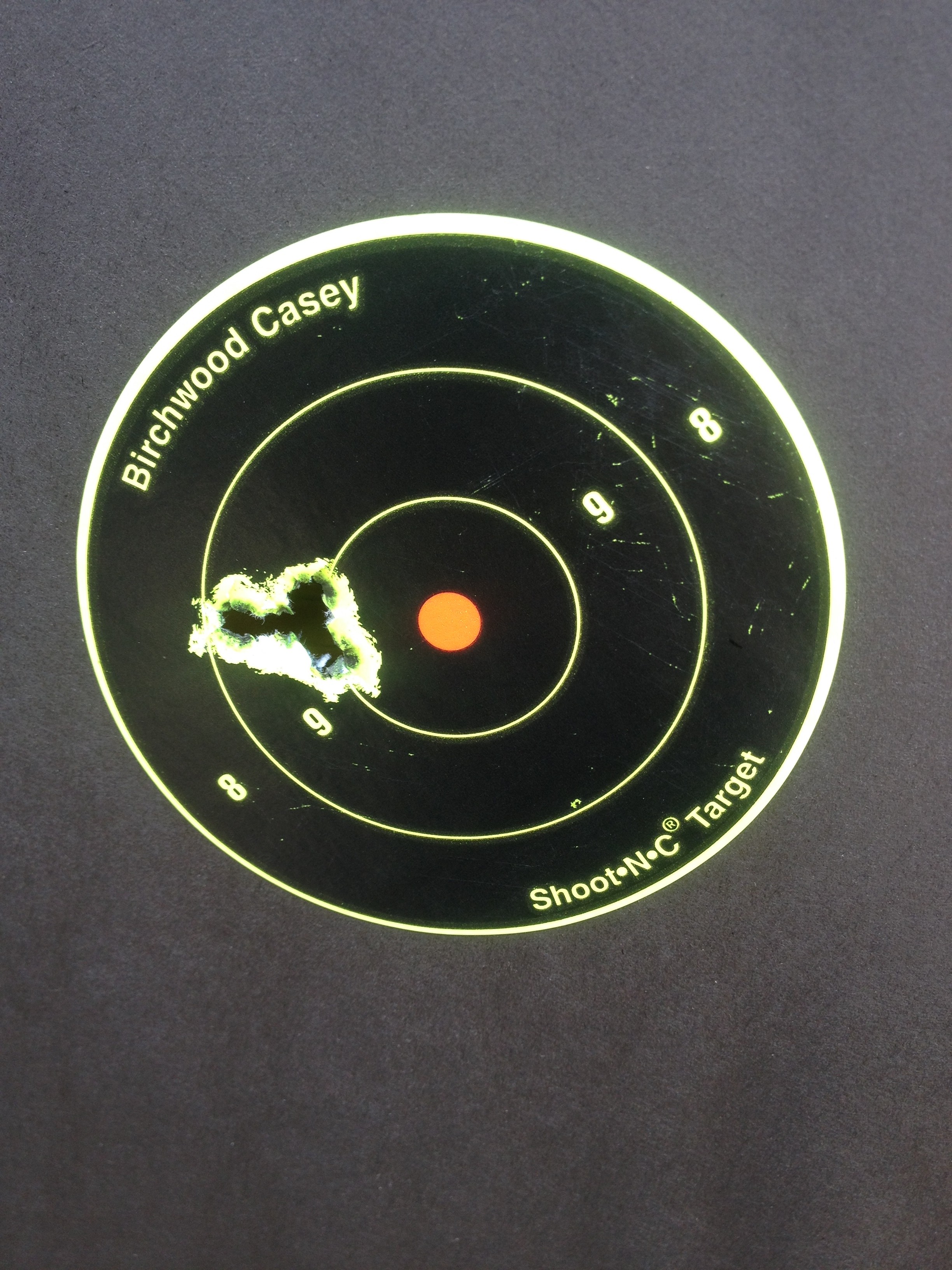
Too many people focus on reducing group size or speeding up their shooting by purchasing gadgets and less by training.
The firearms industry is driven by the aftermarket, not necessarily the weapon manufacturers themselves. Through advertising, aftermarket manufacturers convince the average shooter that they “need” every trinket and gizmo to make themselves a better shooter. This seems to be a never ending battle I have with people, convincing them which is more important, the software or hardware. Continue reading
Wilson Combat to Host Ernest Langdon in TX
On the heels of the announcement of the collaboration between Wilson Combat and Beretta guru Ernest Langdon, Wilson Combat has just announced they will be hosting Ernest for a “How to Run a Beretta Handgun” Course at the Wilson Ranch in Cuthand, Texas. Die hard Beretta aficionados will immediately recognize Ernest as the industry’s most knowledgeable instructor on running and modifying the Beretta handgun. A prior member for the Beretta shooting team, Ernest’s competition career has earned him countless national IDPA and USPSA titles with a double action pistol. He also has extensive military experience as an end user and instructor.
Shooting Without…Yourself.
So, what the hell does that mean? We often go to the range, start shooting a drill or even bullseye practice, and begin to make judgements. “Damn, my shots keeping going to the left.” “I’m shooting too slow”. “Why can’t my group look like his group?” or even, “I suck!” This is your ego or more commonly known as the conscious mind. It tells us what’s going on. It’s that running monologue in your head. This reminds of me of the scene in the iconic Tom Cruise movie, “The Last Samurai.” In it, our hero has learned the art of the sword and is in a competition with one of the instructors. As it goes on, he has a hard time connecting and summarily gets his butt kicked. Continue reading
Review: Mike Pannone M16, AR15, and HK 416 Handbooks
I’ve been following Mike Pannone through his writings and videos on the Internet for quite some time now. I enjoy his no-nonsense, performance based approach to training. His drills are challenging and rooted in reality. I particularly like his 15 in 10 Drill, which pushes the limits of speed while keeping a tight accuracy standard. This past SHOT Show, I ran into Mike in one of the hallways and had a nice chat with him. While this was the first time we had met in person, I felt like we were chatting like two old shooting buddies. His real world experience is significant (look it up), but Mike also has a solid grasp of the industry, and therefore understands the pros and cons of each weapon system. Hilton recently attended Mike’s Covert Carry Class and keeps telling me how I have missed out by not yet taking the opportunity to get on the range with Mike. Continue reading
Competition and the Tactical World..the end (Part IV)
Competition vs. the Tactical World: Stage Planning and Wrap Up
So as we head into the final stretch of our exploration on why competition is good (no great) for the tactical world, we have one more area to cover. I’d like to talk about stage planning and visualization.
There are several ways of stage planning so for most of this article I want to focus on USPSA style of stage planning. “Well, what is stage planning?” Good question. In USPSA, at a match, the rules allow competitors up to five minutes to look over a stage, walk through it and air gun (not air guitar) as they walk through. Let’s break down those parts. Continue reading
THE POLICE MARKSMAN : STILL A PLACE TO “GET SOME”
I previously noted in an MSW post the return of The Police Marksman. You can read/download the latest issue, eBook style here. In addition to the long running “Officer Down” column (the John Schoen incident), the current issue has articles on the XDM 5.25, shooting competition, use of extended magazines, and learning the mechanical offset of lasers. Every issue contains good stuff for LEOs; the subscription price cannot be beat, so there is no $$$ excuse for not reading.
SOLO INTERVENTION OF THE LONE “ACTIVE KILLER” : FANTASY OR REALITY? [PART TWO]
At the end of part one, I suggested a solo intervenor’s mission is driven by two goals: (1) Interrupting, containing, and deactivating the active killer, and; (2) communicating and identifying oneself as the “good guy” so victims, witnesses, and responding LEOs do not mistake an intervenor (you) for the active killer. I didn’t suggest which of the two was more important. That depends on the intervenor’s own analysis of the SHOULD and MUST. I also purposely failed to mention something obvious: Time spent on the second goal delays implementation of the first, thereby diminishing the chance of an earlier, more lives saved intervention. Continue reading
SOLO INTERVENTION OF THE LONE “ACTIVE KILLER” : FANTASY OR REALITY? [PART ONE]
This post started out in draft (many months ago) as a review of the Panteao Productions video by Paul Howe, “Civilian Response To Active Shooters.” (Click on the image to read some of Paul Howe’s background).
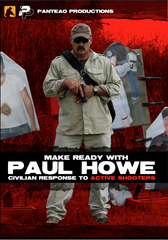 I was a bit uncomfortable some might think I had strayed from my lane as I have no military combat experience, and neither my training nor my life or death experiences resemble Paul Howe’s. Thus, I changed this post to pose and (hopefully) answer the title question. I think a better term to describe the dynamic incidents addressed is “active killer,” so I use that term instead of the universally used term “active shooter.”
I was a bit uncomfortable some might think I had strayed from my lane as I have no military combat experience, and neither my training nor my life or death experiences resemble Paul Howe’s. Thus, I changed this post to pose and (hopefully) answer the title question. I think a better term to describe the dynamic incidents addressed is “active killer,” so I use that term instead of the universally used term “active shooter.”
I know Paul Howe only by reputation, his videos, and the material he and others have posted on the internet about his classes and training facility, CSAT. If I had a training “bucket list,” a week or two at CSAT would be on it. Real operators I know respect him, his abilities, and doctrine. Paul’s video provides basic insight into civilian mindset, gear, and tactics appropriate to intervene in an active killer incident. Obviously, a safer intervention tactic would be simply to have Paul Howe with you and let him do the heavy lifting. You would stay out of the fight, help with the evacuation of innocents, and provide direction to sworn first responders (most importantly, describing the armed and qualified civilian responder who already entered and was in response mode). Unless you are Mrs. Paul Howe, that’s fantasy. Continue reading
Competition Vs. The Tactical World part Tres…
Shooter ready? Stand by…”beep!” And they’re off…Bam, bam, run, bam, bam. Crash..burn..oh crap.
What happened? 4 misses, 2 no shoots..but a smoking time. So what? Yeah, you were fast, but what did you hit? But I was fast…Heard that scenario many times at matches. But what about this one?
“Today in NYC, three bystanders were shot by police as they attempted to take down a murder suspect in front of the Empire State Building (true story).” I don’t want to get into specifics on the brave LEOs facing an armed killer, since 20/20 hindsight is always easier than being there. However, a lot can be learned from these kinds of events.
WARNING: The following is based on my opinion and like your opinion, we all got one. I ask you to check your ____ and continue to read. YMMV… Continue reading
Are You REALLY Doing It Right?
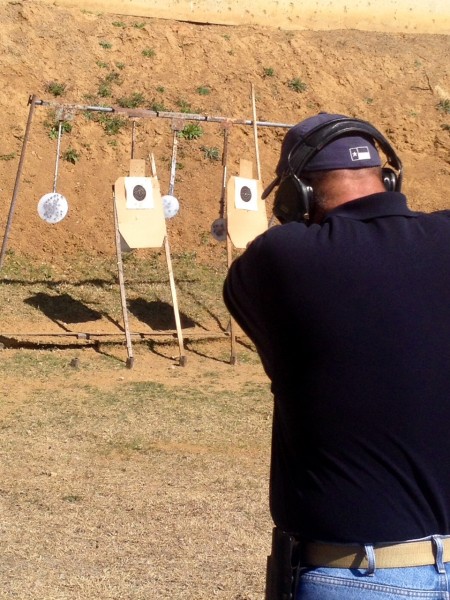
Are we treating the standing targets as “non-shoots” or as true innocent bystanders and applying all the basic safety rules?
At our last training day, Wayne Dobbs and I ran into a little problem. After a solid day of shooting a variety of tough drills and courses, we decided to add a little “competition” to the end of the day. We recently began running a pretty good little drill of 2 hits on a 10” plate at speed and then transition to an 8” plate for a single hit. We decided to now run this on a rack with a 10” plate and two separate 8” plates. To make things a little more interesting, we added two “innocent bystanders” between the targets. We also added a couple of rules. You could not violate the four basic safety rules. This meant that on the transition from the various plates across the innocent by-standers, you could not have a finger on the trigger, and the muzzle could not cover the non-shoot targets. After a couple of runs, we just put the timer away. It was insanely hard to not cross those non-shoots and to get that finger onto register. It took a lot of work to try to do this “right” and not necessarily “fast”. We also started moving to offer up better shots to minimize the risk to the non-shoots. Continue reading
MAY/MUST Questions Answered Correctly. . . Shoot First, Live
There is a saying (often attributed to Clint Smith of Thunder Ranch): “Some people just need to be shot.” Taking a life is the last thing anybody wants to do, whether in public service as an LEO, or as an unsworn in defense of self or innocent others. But wise and healthy aversion to the awful, distasteful, life-changing (but sometimes necessary) deed does not render that statement silly or merely theoretical, legally or tactically. Continue reading
Part II: Competition vs. The Tactical World
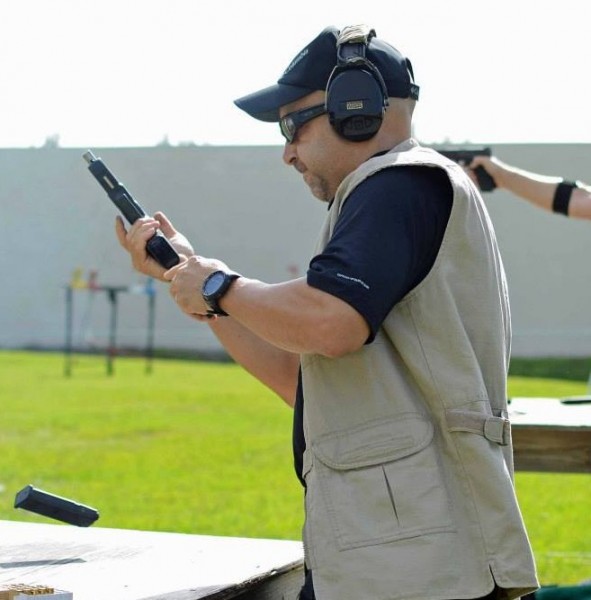 Last time we left off on the crusade to make competition safe for the tactical world, we were making the case that stress introduced into shooting causes interesting results. Being able to work through the stress of the timer will always improve your shooting ability.
Last time we left off on the crusade to make competition safe for the tactical world, we were making the case that stress introduced into shooting causes interesting results. Being able to work through the stress of the timer will always improve your shooting ability.
I just got back from competing in a major international shooting competition where I saw and experienced different levels of stress. The funny thing about stress (aside from actual physical stress) is that it’s only in the mind. That’s right. Stress is in the mind. Stress has nothing to do with shooting. Does it? What constitutes shooting? Lining up the sights and pulling the trigger. No where in that equation does the word “stress” make an appearance. “I hope I won’t miss”, “I suck at steel”, “I hate qualification” etc. All mental problems that have nothing to do with shooting. Being able to turn off the mental stress (conscious mind) and replace it with subconscious skill comes only with repeated practice. However, you can practice and practice by yourself for eternity, but you need a way to test it. That comes from shooting competitions. Continue reading
Competition vs. the Tactical World
“Don’t go swimming after you just ate a meal”, “You’ll get sick if you go outside with wet hair” and of course, “shooting competition will get you killed!” (from the Tactical Bible..)
Axioms to live by..or maybe we need to use critical thinking to get past what easily could be described as sacred mumbo jumbo. Why? In this four part series I’m going to present an argument on why competition is good for the tactical soul. Continue reading



